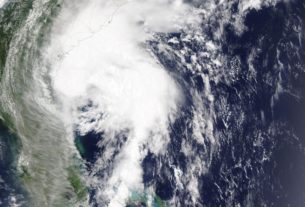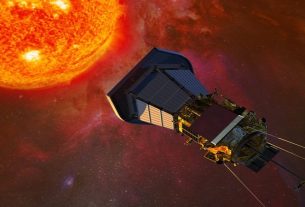Research suggests that some volcanoes on Venus may still be active today. Eruptions could even have occurred just a few days ago.
Besides Earth, Io (Jupiter’s moon) is the only known object in the solar system to host active volcanoes. However, there are indications that Venus may also be affected. It would not be so surprising since the planet has a size comparable to that of Earth. It should therefore still harbor significant heat reserves below the surface.
In the early 1990s, the Magellan spacecraft was the first to locate traces of volcanic activity on the planet by mapping its surface. However, it could not be said at the time whether these volcanoes were still active or very old.
In the 2000s, the European Space Agency’s (ESA) orbiter Venus Express made it possible to take a new look at the volcanism of Venus by measuring the amount of infrared light emitted by part of its surface. The summit of Idunn Mons in particular, which looks like a volcanic structure, seemed abnormally hot.
It was then suggested that these data betrayed the presence of lava flows developed between 2.5 million years and 250,000 years ago. The probe also recorded episodic spikes of sulfur dioxide in the atmosphere. This gas could then have been produced by the same eruptions causing the lava flows observed.
Very young lava flows
Nevertheless, there was still a lack of precision at the time, since we did not yet know how quickly volcanic rocks could evolve in response to the atmosphere of Venus.
To learn more, researchers recently studied how crystals of olivine, a mineral commonly found in volcanic rock, could react over time in conditions that mimic the atmosphere of Venus.
To do this, the researchers heated the olivine in an oven heated to 900 degrees Celsius for a month. They then discovered that the mineral was coated in a few days with magnetite and hematite – two minerals of iron oxide. Once these chemical reactions took place, certain characteristics of the olivine were then much more difficult to detect.
Since the Venus Express probe from its orbit detected traces of lava flows – betrayed by the presence of olivine – this suggests that they came from very recent volcanic eruptions. If they had been older, the probe would not have been able to observe them since the chemical reactions of the rock with the atmosphere of Venus would have obscured them.
For researchers, these new data, even if they were only obtained in the laboratory, suggest that Venus is still prone to eruptions today.
“This is the first time that we have determined active volcanism on another planet,” said Justin Filiberto, of the Universities Space Research Association (USRA) in Houston (United States). Future missions should be able to see these flows on the surface and provide concrete evidence of this activity. ”

Email: mary@satprwire.com Phone: +44 20 4732 1986
Marry is a fitness freak in every manner and gives proper care about her health and of others. She is probably the best person we have at Daily Research News for covering articles from the Health sector. If not at work, she can be seen drinking a cup of coffee.



